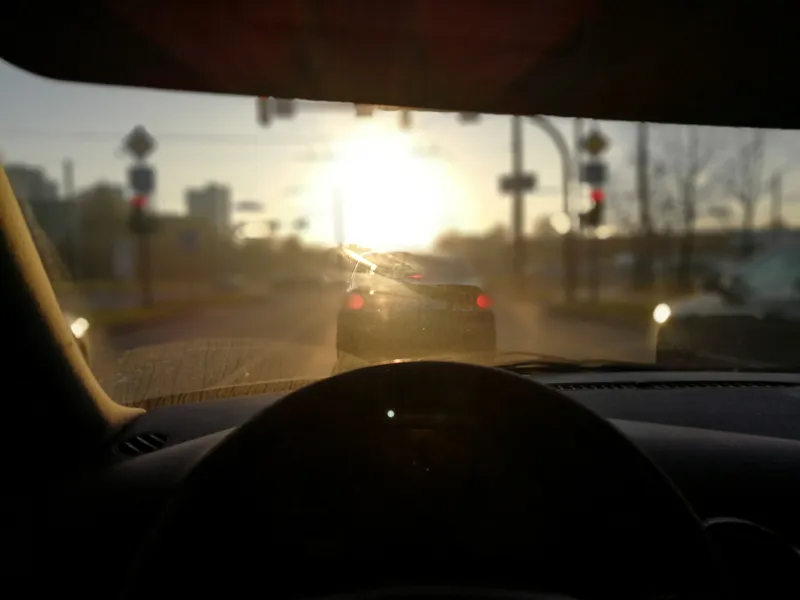About 87 per cent of drivers in the US engaged in at least one risky behaviour while behind the wheel within the past month, according to latest research by the AAA Foundation for Traffic Safety. This includes driving while distracted, impaired, drowsy, speeding, running red lights or not wearing a seat belt. These results come as nearly 33,000 Americans died in car crashes in 2014, and preliminary estimates project a nine percent increase in deaths for 2015.
The report finds that one in three drivers ha
March 4, 2016
Read time: 3 mins
About 87 per cent of drivers in the US engaged in at least one risky behaviour while behind the wheel within the past month, according to latest research by the 477 AAA Foundation for Traffic Safety. This includes driving while distracted, impaired, drowsy, speeding, running red lights or not wearing a seat belt. These results come as nearly 33,000 Americans died in car crashes in 2014, and preliminary estimates project a nine percent increase in deaths for 2015.
The report finds that one in three drivers have had a friend or relative seriously injured or killed in a crash, and 1 in 5 have been involved in a crash that was serious enough for someone to go to the hospital. Other key findings include:
More than two in three drivers report talking on a cell phone while driving, with nearly one in three drivers doing this fairly often or regularly. In addition, more than two in five drivers admit to reading a text message or email while driving, while 12 percent report doing this fairly often or regularly. Over 80 percent of drivers view distracted driving as a bigger problem than three years ago.
Nearly half of all drivers report driving 15 mph over the speed limit on a freeway, while 15 per cent admit doing so fairly often or regularly. About 45 percent of drivers report driving 10 mph over the speed limit on a residential street in the past 30 days and 11 percent admit doing so fairly often or regularly.
Nearly one in three drivers say they have driven when they were so tired they had a hard time keeping their eyes open in the past 30 days. More than one in five admitted doing this more than once during that time.
More than one in three drivers admits to having driven through a light that had just turned red when they could have stopped safely during the past 30 days. About one in four drivers reported doing this more than once during that time.
Nearly one in five drivers report driving without a seatbelt within the past 30 days, and more than one in seven admit to doing this more than once.
More than 1 in 8 motorists report driving when their alcohol level might have been near or over the legal limit, with about nine per cent of drivers admitting to doing this more than once over the past year.
“There is a culture of indifference for far too many drivers when it comes to road safety,” said Peter Kissinger, President and CEO of the AAA Foundation for Traffic Safety. “The vast majority of motorists believe they are more careful than others on the road, though most of them are not making safe decisions while behind the wheel. We’re asking every driver to make responsible decisions to make the roads safer for everyone.”
The new survey results are part of the AAA Foundation’s annual Traffic Safety Culture Index, which identifies attitudes and behaviour related to driver safety. The survey data are from a sample of 2,442 licensed drivers ages 16 and older who reported driving in the past 30 days.
The report finds that one in three drivers have had a friend or relative seriously injured or killed in a crash, and 1 in 5 have been involved in a crash that was serious enough for someone to go to the hospital. Other key findings include:
More than two in three drivers report talking on a cell phone while driving, with nearly one in three drivers doing this fairly often or regularly. In addition, more than two in five drivers admit to reading a text message or email while driving, while 12 percent report doing this fairly often or regularly. Over 80 percent of drivers view distracted driving as a bigger problem than three years ago.
Nearly half of all drivers report driving 15 mph over the speed limit on a freeway, while 15 per cent admit doing so fairly often or regularly. About 45 percent of drivers report driving 10 mph over the speed limit on a residential street in the past 30 days and 11 percent admit doing so fairly often or regularly.
Nearly one in three drivers say they have driven when they were so tired they had a hard time keeping their eyes open in the past 30 days. More than one in five admitted doing this more than once during that time.
More than one in three drivers admits to having driven through a light that had just turned red when they could have stopped safely during the past 30 days. About one in four drivers reported doing this more than once during that time.
Nearly one in five drivers report driving without a seatbelt within the past 30 days, and more than one in seven admit to doing this more than once.
More than 1 in 8 motorists report driving when their alcohol level might have been near or over the legal limit, with about nine per cent of drivers admitting to doing this more than once over the past year.
“There is a culture of indifference for far too many drivers when it comes to road safety,” said Peter Kissinger, President and CEO of the AAA Foundation for Traffic Safety. “The vast majority of motorists believe they are more careful than others on the road, though most of them are not making safe decisions while behind the wheel. We’re asking every driver to make responsible decisions to make the roads safer for everyone.”
The new survey results are part of the AAA Foundation’s annual Traffic Safety Culture Index, which identifies attitudes and behaviour related to driver safety. The survey data are from a sample of 2,442 licensed drivers ages 16 and older who reported driving in the past 30 days.









